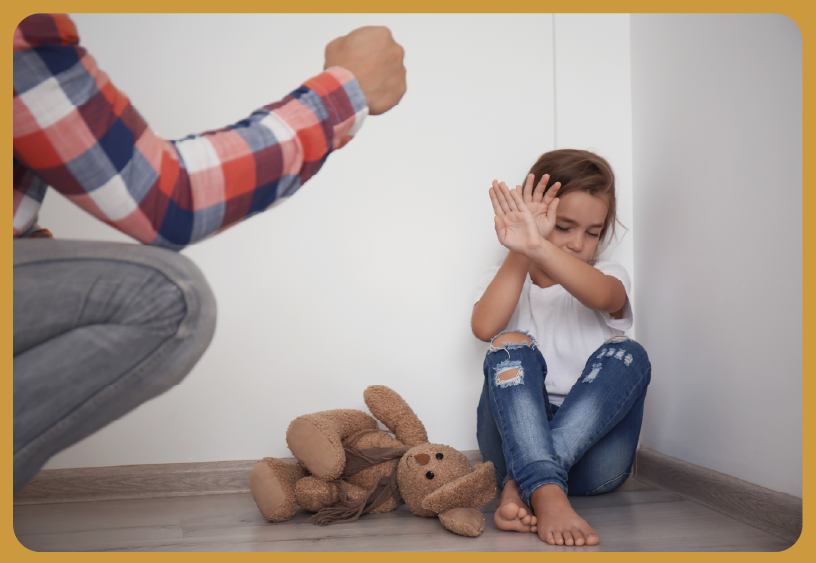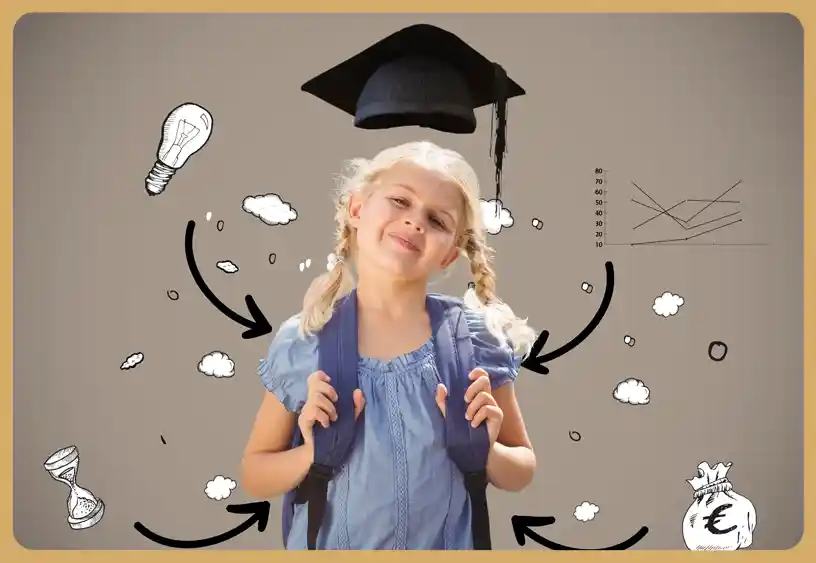
How many times have we disguised punishment as discipline, thinking that they are simply interchangeable? Although they might seem alike in some shade of light, this is not the case. Having a better understanding of discipline and punishment helps us gain insight into the way we view the world and the way we treat the people around us.
What Exactly Is Punishment?
Scientifcally, punishment is a behavior consequence aimed to deter that conduct. This notion stems from B.F. Skinner's operant conditioning theory. Operant conditioning examines how conduct impacts subsequent events.
There are two main types of punishment: those that are good and those that are bad. When you use positive punishment, you add something bad to the surroundings after the action. This is called an aversive input. For instance, if a teacher scolds a child for being bad, that scolding is a positive punishment.
In contrast, negative punishment takes away something positive to reduce the likelihood of the action happening again. Negative punishments include depriving a youngster of screen time for misbehaving. Both goals are to reduce the likelihood of the undesired action due to impacts. Punishment doesn't always modify conduct and raises societal issues. Scientific study suggests avoiding punishment since it might make individuals furious or hinder them from improving. Punishment timing, regularity, and appropriateness also impact its efectiveness.
What Are The Issues With Punishment?
Researchers have observed the dynamics of punishment from various angles, and it has helped them understand the shortcomings of this concept:
Temporary Suppression of Behavior
Punishments can curb poor conduct temporarily, but they may not solve the problem. Instead of learning the consequences of their actions, people may learn how to escape punishment. This only minimally reduces their negative behavior. If you don't address the root reasons, undesirable conduct may return after they're not in trouble. This cap indicates that sanctions influence behavior over time, so consider this.
Unintended Consequences
One can say that punishments might cause unintended fear, anger, or nervousness. If you chastise someone, they may hang onto unpleasant sentiments, making it difficult to create a positive environment. If you simply consider consequences, you may not understand why individuals do wrong things, making it difficult to solve the root causes. Be mindful of these consequences and strive to reduce them to achieve lasting behavior adjustments without mental side effects.
Limited Generalization
There is some major inconsistency associated with punishment. People may only change their behavior near the punisher and not elsewhere. Their inability to adapt highlights how crucial it is to have full behavior management methods that assist learned behaviors be employed more regularly in varied circumstances.
Inhibition of Learning
Without clear instructions, punishments might slow learning. People afraid of getting in trouble may not explore new things, take risks, or handle issues creatively. You must balance guidance with penalties to create a productive learning environment. People can comprehend why they did what they did and be open to learning and evolving.
Lack of Instruction
Another issue with punishment is that it doesn't make it clear what actions are needed or okay. Punishments don't teach people how to do good things. They only teach them what not to do. Clear directions, positive comments, and chances for people to learn and practice good behavior are all parts of effective strategies that change people's behavior. This helps people know what is expected of them.

What Do We Mean By Discipline?
A disciplined manner of managing and altering behavior via educating, leading, and rewarding methods is discipline. Instead of punishing poor behavior, discipline teaches self-control and good behavior. Based on behavioral psychology, the profession uses a range of ways to assist people acquire positive habits and manage their behavior.
Positive feedback underpins discipline. Positive reinforcement follows a desired behavior with a positive stimulus. This increases the likelihood of repeating the activity. This might entail verbal praise, physical advantages, or other positive events that encourage rule-following in a punitive situation. Discipline rewards excellent conduct to make it habitual. Scientific discipline also includes communicating expectations and offering recommendations. Clear and consistent rules, standards, and sanctions can help. Clear communication reduces confusion and generates order. Discipline teaches individuals how to act better and gives them the tools to make good decisions.
Are There Any Merits To Discipline?
Of course, there are! There are ample number of studies done on the concept, and the results shine light on the many advantages it offers.

Promotion of Self-Regulation
Self-regulation abilities help people regulate their actions, feelings, and impulses. Discipline helps people build mental self-discipline by rewarding excellent conduct and setting expectations. Self-regulation helps you handle life and make excellent judgments.
Creation of a Structured Environment
Discipline provides an organized and predictable environment. Clear norms and standards make people feel secure and organized in personal, commercial, and educational settings. This organized environment helps people learn, grow, and develop duty.
Enhancement of Learning and Skill Acquisition
Disciplinary measures frequently involve useful instruction and direction, which helps individuals learn. Discipline fosters emotional and academic growth by creating rules. In contrast, punishment educates and encourages good conduct rather than halting bad behavior.
Positive Socialization
Discipline teaches people to respect rules, conventions, and others' rights, making them more socially responsible. When they are constantly rewarded for doing well, people learn to work together, care about others, and protect the community. This practice is crucial for strong relationships and a better society.
Prevention of Undesirable Behaviors
Discipline is a good technique to address behavior; the purpose is to prevent unpleasant actions. Discipline involves setting norms and rewarding compliance. It motivates people to make excellent choices, reducing the likelihood of negative behavior.
The Science of Punishment vs Discipline
Now that we have taken a closer look at what punishment and discipline stand for in todays environment, let us do a quick comparison of both.

Focus and Intention
The purpose of punishment is mainly to deter undesirable conduct by causing harm. This strategy links unpleasant conduct to negative outcomes to terrify or discomfort the person so they don't do it again. External control mechanisms that affect behavior with unpleasant cues are emphasized.
However, discipline teaches self-control and appropriate conduct. Discipline teaches individuals the right behavior and develops their own motivation, not merely scare them away. Discipline promotes self-discipline and personal progress via clear communication, good feedback, and guidance.
Approach to Behavior Modification
Punishment controls someone by causing harm. This reduces the likelihood of another mistake. This strategy focuses on preventing harmful behavior without always addressing its causes or helping individuals comprehend it. However in discipline, direct teaching, positive reinforcement, and clear communication modify behavior more completely. This program emphasizes positive habits, self-discipline, and motivation. Discipline is to identify undesirable conduct and equip people to make positive choices.
Temporal Effects
Punishment usually has short-term effects. Behavior normally stops when repercussions are feared. Once the fear of punishment fades, the behavior may return. Discipline is about altering behavior for good by understanding why individuals do what they do. People should comprehend why they do what they do and acquire self-discipline. Creating a feeling of obligation will help people make excellent judgments over time.
Psychological Impact
Cruel or unequal punishment can harm mental health. It might make individuals terrified, worried, or furious, making the classroom a lousy environment to study and stressing relationships. When it comes to discipline, a helpful learning environment is a priority. Discipline uses clear communication, positive feedback, and guidance to prevent unpleasant feelings. Encourages a development-oriented mentality, which improves mental health, learning, and personal growth.
Long-Term Goals
Punishments aim to encourage people to conform immediately and quit doing wrong. Punishment may help some people grow, establish character, or acquire self-control, but not always. The goals of discipline are larger and endure longer. It demands more than immediate rule-following. Instead, it promotes long-term growth, self-motivation, and accountability. Discipline equips people with the knowledge and abilities to make excellent judgments. This can transform conduct and enhance character.
Good To Know The Difference

People sometimes confuse discipline with punishment and punishment with discipline, but the two concepts cannot be more different from each other. Zivanza and our team of expert psychologists are here to help you gain a better understanding of these concepts and enable you to come up with efficient ways to manage your kids as well as imbibe them in your own lives.
- Share














